The Northumbrian sheep I’m currently locked in a staring match with must weigh about as much as I do.
If I collect her on the thermoplastic bodywork of the new Lotus Emira sports car I’m driving, I doubt the impression she would leave would simply pop back out again.
But besides being a sheep, she’s also a useful metaphor. Every time I come around the corner, there she is, licking the road again. She hops onto the verge for just long enough to let the bright red, fast-moving, rather noisy sports car by; and then straight away reassumes her favoured spot, tongue to the asphalt, right in the middle of the carriageway.
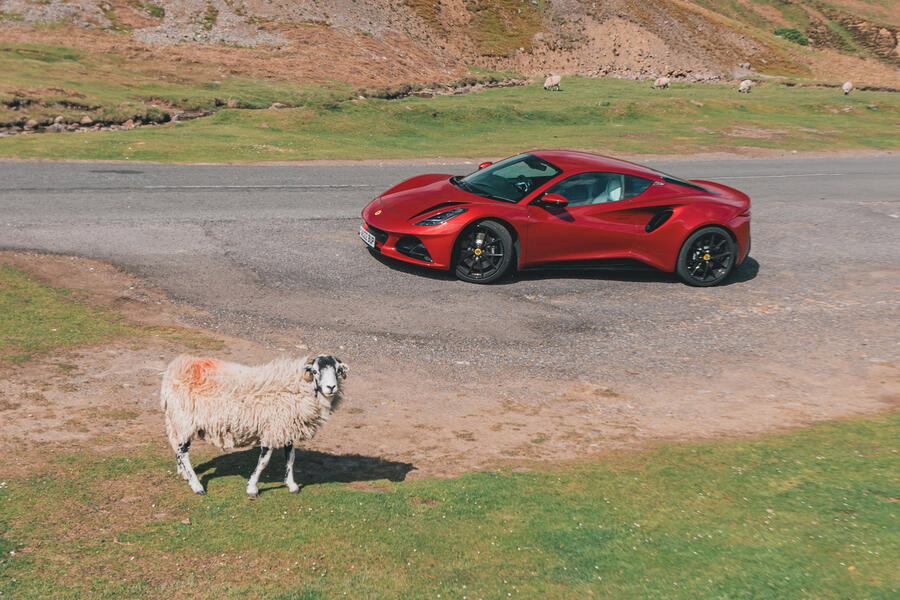
Could she be after the last of the winter’s salt before it gets washed off the road by rain, I wonder? Or be addicted to some chemical or solvent in the bitumen? Whatever it is, she’s not for chasing off the road to any lasting effect. There are thousands of lush acres of the North Pennines Area of Outstanding Natural Beauty to gorge on, and they really do look lovely today. But all she wants is the one ribbon of road running through the middle of them that’s likely, one day, to carry the hastily driven supermarket delivery truck of doom with her name on it.
Lotus was recently trapped in a vaguely comparable downward spiral itself: hamstrung by famously lacklustre management, starved of direction and investment and stuck in a rut of its own making, addicted to lightness and simplicity and reliant on a compelling but outdated model range. It needed a staged intervention, and, as we know, the fateful chariot that emerged from around the corner in 2017 came not to wipe it out but to rescue it, and it carried Chinese automotive industry giant Geely’s name on the side.
The firm has already had £100 million of investment in its UK manufacturing facilities. A bold rejuvenation plan will see its model range expand to include the Lotus Evija electric hypercar later this year; the Chinese-built Lotus Eletre electric SUV in 2025; an entry-level electric sports car soon afterwards; and a fourth larger all-electric GT-style model to boot.
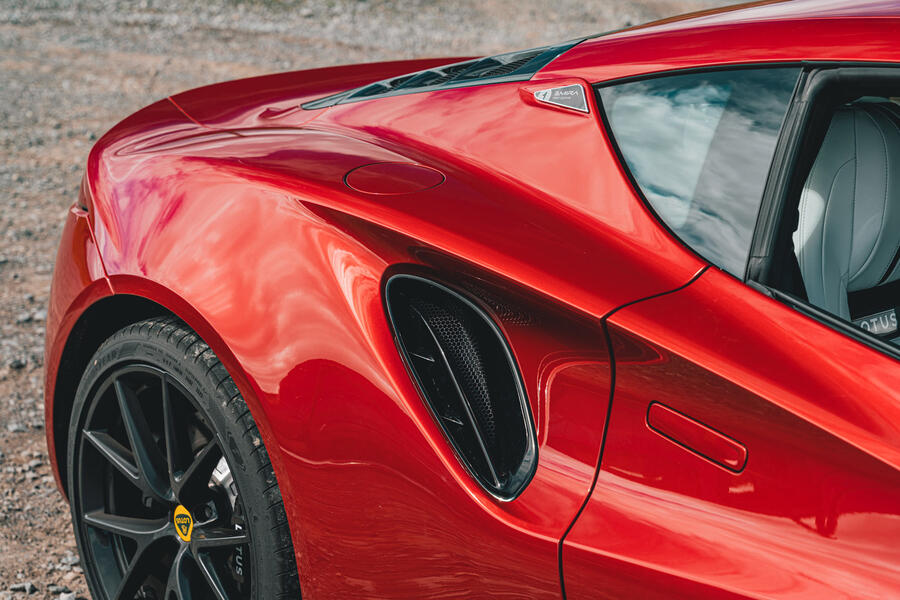
Rather than agonising about what might have been made of such cars in years gone by, Lotus is now embracing the new appetites of the world’s sports-car buyers and simply getting on with making those cars the very best Lotuses they can be. After decades of stagnation, it’s embracing change. Unlike the sheep, Lotus has jolted itself out of its old ways and is setting out to prove that, contrary to previous appearances, it really can adapt in order to survive.
And, emblematically enough, it has widely adapted something of the old Lotus to better fit into its new philosophy. The brand crows publicly that the Emira sports car, the last series-production combustion-engined model that it will make, is all-new; but it will privately admit that it’s actually a very widely and thoroughly updated version of the old Lotus Evora sports car. It’s based on a redesigned version of the Evora’s bonded aluminium chassis, built in a new factory close to the firm’s Norfolk HQ, and it runs the same wheelbase (although it has wider tracks than the Evora did). It’s launched with updated versions of the same Toyota-derived, mid-mounted 3.5-litre V6 supercharged petrol engine and six-speed manual gearbox that the Evora used, too. The technical parallels speak for themselves.
But the Emira is sufficiently different in how it looks, how it’s finished and what it’s like to travel in to represent a significant moment for Hethel. It represents an acceptance that people who want lightness, rawness, purity and feel from their sports cars in 2022 want other things as well. A fairly easy car to use and to drive; a comfortable seat and a good driving position; a well-finished cabin of enticing high quality and modern convenience features; a full suite of useful onboard infotainment technology; and a decent amount of accessible cargo space.
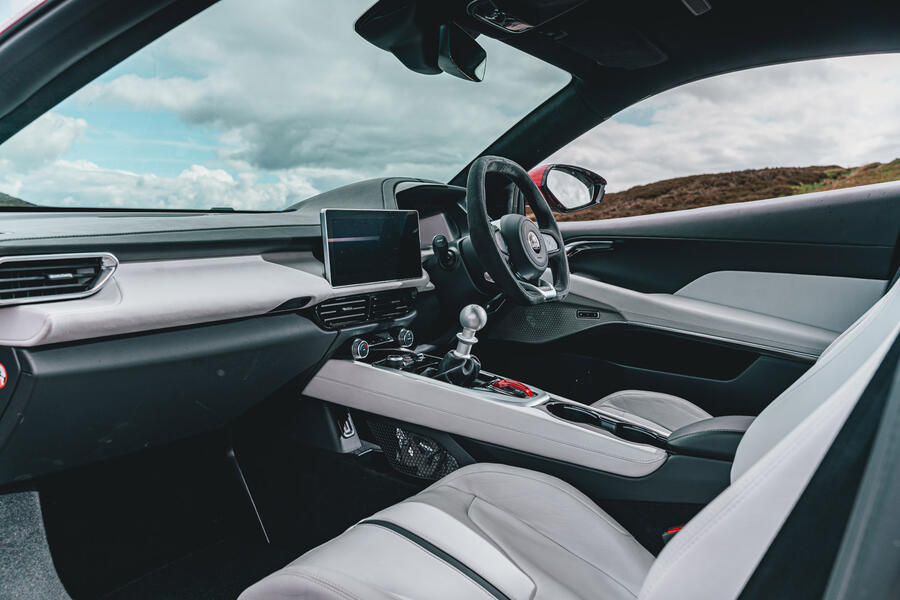
The Emira is the Lotus sports car made habitable, usable, upmarket, tech-savvy. Modern, in other words. Which is exactly how a certain other rather more commercially successful sportscar maker, from Germany, has been turning them out for a few decades.
So we’re not standing on ceremony. Today we find out how the new Lotus squares up against the benchmark mid-engined sports car with which it has been designed to compete: the Porsche 718 Cayman, in six-cylinder GTS 4.0-litre form.
It’s a formidable test for the Lotus for all sorts of reasons, and, since I drove it up to these moorland roads yesterday, I’m already aware of exactly where the Cayman might be vulnerable to the Emira – and where it feels next to invulnerable.
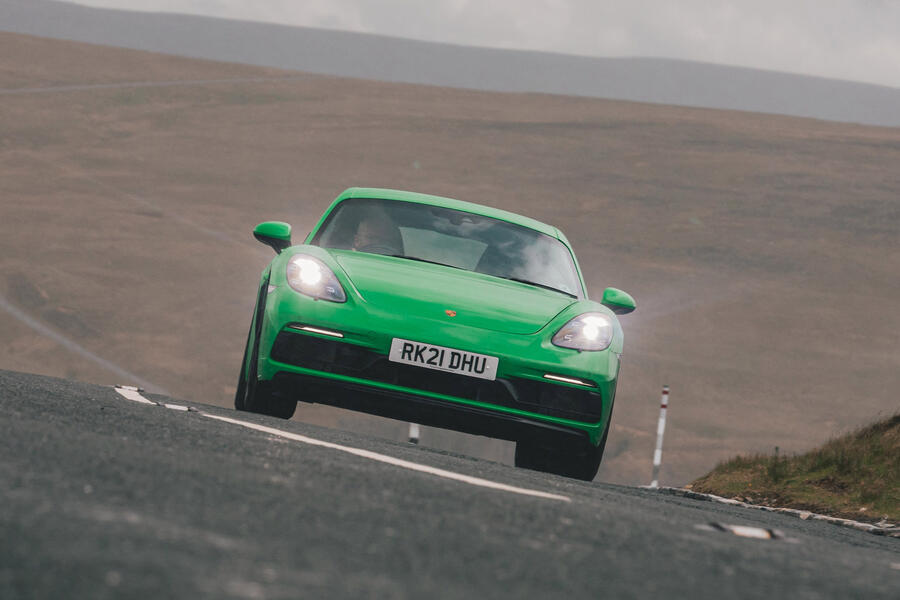
The 982-generation 718 is an old model now – six years and counting, with a new model due next year. Below six-cylinder level, the Cayman is still offered with some widely criticised flat-four engines, which it will be for Lotus’s Mercedes-AMG-engined four-cylinder Emira to square up with on another day.
Even at this stage in its model cycle, the Cayman GTS 4.0 still mixes desirability, usability, compactness, quality, comfort, cruising refinement and driver appeal in a way that’s totally unmatched in the sports car market.
Back in 2017, the Alpine A110 proved that it could be beaten in some ways (for lightness, space efficiency, handling fluency and really simple on-road driver appeal), but it hasn’t outperformed it commercially.

The Emira’s angle of attack is different. In contrast to the Alpine, it feels like a bigger, wider, meatier and slightly heavier car than the Porsche. It’s one of a rawer feel, tauter body control, greater tactile involvement and more vivid driver engagement than the Cayman – which might come as welcome news to Lotus devotees in the light of the company’s newly civilised priorities.
There are some clear supercar-like dynamic overtones about the Emira, which contrast quite plainly with those of the slighter, lighter-feeling, content-to-play-the-little-guy Porsche. But underneath all the new leather and silicon, this Lotus is still a likeably uncompromising driver’s car.
Before we get to all that, though, there’s the really new bit to cover: the Emira’s interior. You stoop and drop sideways into a properly cushioned and nicely stitched leather seat in this car, lifting and folding your legs a little more awkwardly into the footwell than you might in the Cayman; but, once you’re used to the process, you don’t really notice any relative inconvenience. In a Lotus, that feels new. The car’s pedals are much better located than the Evora’s were: straight-set enough that you don’t notice much wheel-arch intrusion, leaving you feeling well aligned with the controls. That’s new too.
![]()
Both cars sit you similarly low in their respective cockpits, but because the Lotus’s scuttle and windowline are lower and its roofline likewise, you still feel a little more squeezed into the Emira than you do the Cayman. The Porsche’s primary ergonomics and cabin layout remain a cut above for outright comfort, but the Emira is now comparably comfortable and accessible.
And what’s this? A plush-feeling leather-wrapped dashboard. A raised centre console clad in textured aluminium and glossy trim. A full-size glovebox and storage cubbies in the doors big enough to actually put things in. Proper cupholders besides. A proper climate control console with metallised adjustment knobs rather than silly buttons. All-digital instruments, a premium sound system and a 10.3in touchscreen infotainment set-up that makes the equivalent system in the Porsche look just a little bit postage-stamp-like.
After the Evora, with its absence of useful storage, its backwards infotainment offering and its fiddly, cheap-feeling secondary controls, this looks like a cabin you could actually move your possessions into. One ready for daily service fairly comfortably. In a Lotus? Believe it.
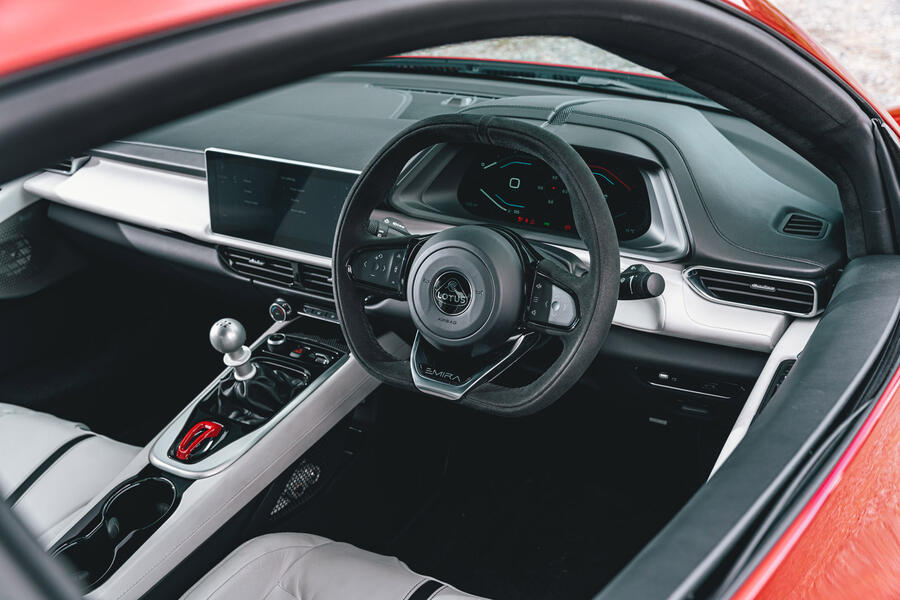
Of course, this newly civilised Emira needs to be a lot better-mannered on the move than the old Evora (which got quite wickedly uncouth towards the end of its life) in order to make big strides into Porsche territory. A swanky new sat-nav, some nicely stitched leathers and some chrome air vents don’t make a sports car summer. And even as a late prototype without all of Lotus’s production-intended noise and vibration dampening measures, the Emira proves that Lotus is making fast progress even here.
Where the Cayman GTS offers adaptively damped PASM suspension as standard and cruises really gently and comfortably over long distances, the Emira has passive dampers and a tauter ride by default. It’s a markedly firmer-riding car than the Cayman. It’s more connected-feeling to any given road surface but not much noisier – at least, not when equipped with Lotus’s softer ‘touring’ suspension tune and its road-intended Goodyear tyres.
Both of these cars have that duality of the great modern sports car: the ability to gear up and quieten down on the motorway when you want them to but then to open an exhaust valve after a downshift or two and to drown the neighbouring traffic with some tuneful audible violence.
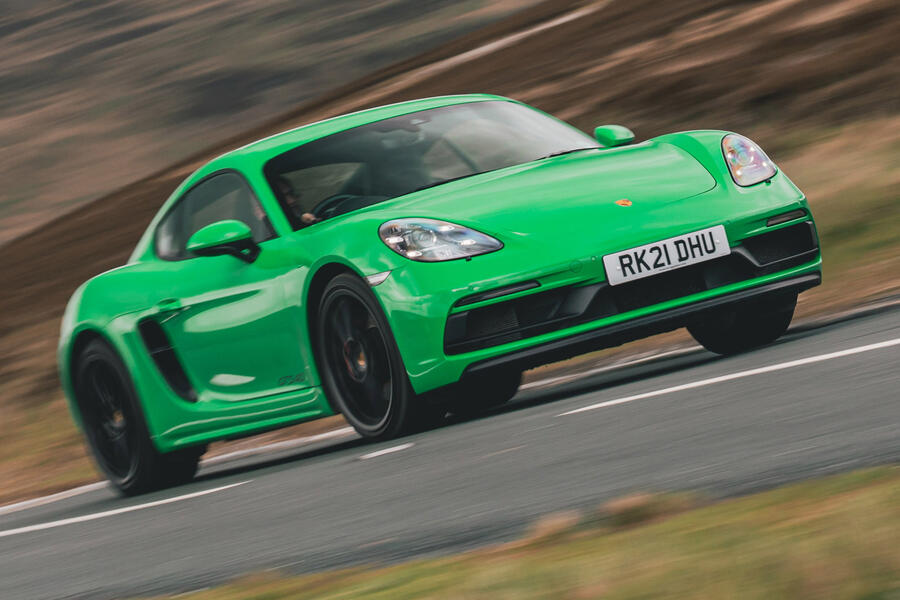
The Porsche’s transformation from gentle hum to turbine howl is probably marginally the starker because it starts off that little bit quieter at a cruise; but it’s the Lotus’s V6 that sounds the sweeter and more enlivening. This is a breathy German saxophone quartet versus a more shrill, resonant English opera aria in a cutlery drawer. The Lotus’s supercharger makes it sound the more mechanical and quite a lot less filtered. But both engines make a wonderfully rich and alluring noise, just as a sports car should.
The way is open for the Lotus Emira, then, in touch as it is with its class-leading German rival as a daily owning and running prospect and within striking distance of eclipsing it, even, with a really special dynamic performance. Could that happen? Can some old-fashioned, stand-out Lotus ride and handling seal the deal?
That would be a monumental upset. For the newly energised underdog to beat the company that has consistently been one of the most profitable in the global car industry for the past two decades, and pouring so much of that profit directly into making incrementally better sports cars, year after year. Against that backdrop, I think the Lotus makes this a tougher call than anyone might really have believed.
![]()
There is a list of things that the Emira does better than the Cayman on the road, and, where driver appeal is concerned, they’re rather important things.
Lotus’s hydraulic steering rack gives the car twice as much tactile appeal, for a start. On a really testing road, where the Porsche’s lowered suspension can make it begin to run out of wheel travel and easy close body control, the Lotus’s stellar damping comes to the fore, keeping it supremely level and composed.
Rather than through the ride, it’s the steering through which you can feel the bumps in the Emira. Its pace, weight and feedback combine beautifully on a winding road. The on-centre pick-up is gradual enough to allow the wheel to squirm in your hands over changing camber and for road feel to come bubbling through so clearly but without destabilising the car. As you change direction, you can feel both tyre sidewall and suspension load up really clearly. That’s top-level driver engagement like you will find in very few places in the car market these days.
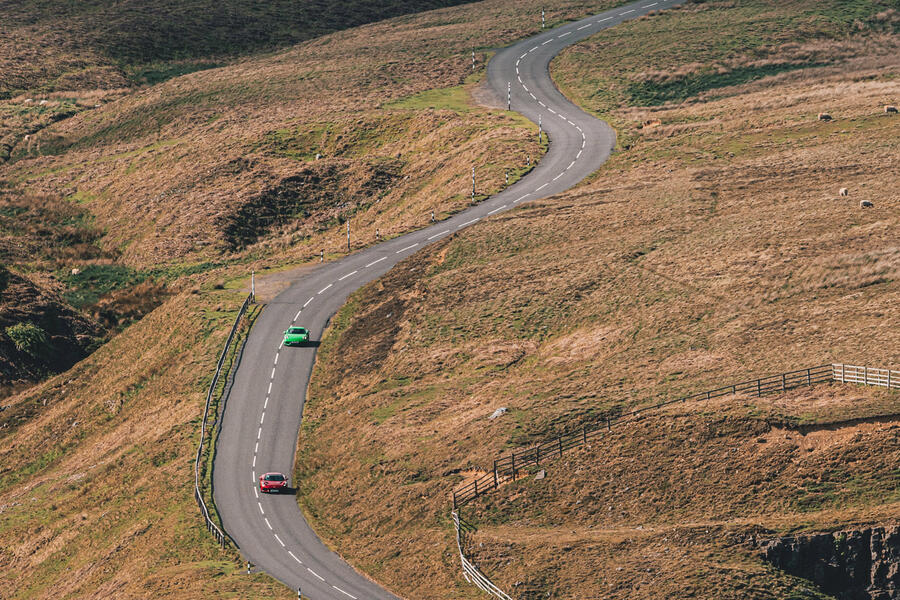
But if the Lotus’s steering and damping are its main draws, the Porsche counters with even crisper and more linear chassis and engine responses. It has a more compact, exploitable footprint on the road than the Lotus and a shade more metronomic precision in its handling to compensate for the relative shortage of feel. Its handling balance is every bit as good.
It has a sweeter manual gearshift than the Lotus, too, and a freer top end of the rev range as you let it accelerate. The Lotus probably has the edge on roll-on performance thanks to its supercharged torque and better-chosen gear ratios; but both cars are a delight to drive quickly and keenly when the occasion presents – and both now are pleasant enough to drive more matter-of-factly for the rest of the time.
Where that leaves us, by my reckoning, is in a very good place for Lotus, albeit still a better one for Porsche. The all-round improvement of the Emira, judged against both its predecessor and its competition, is the headline news of this story, but the indecently usable, supremely comfortable and well-mannered Cayman is still the better all-round sports car. Getting back into one still feels like putting on the best-fitting pair of jeans you ever owned and then heading out on the town.
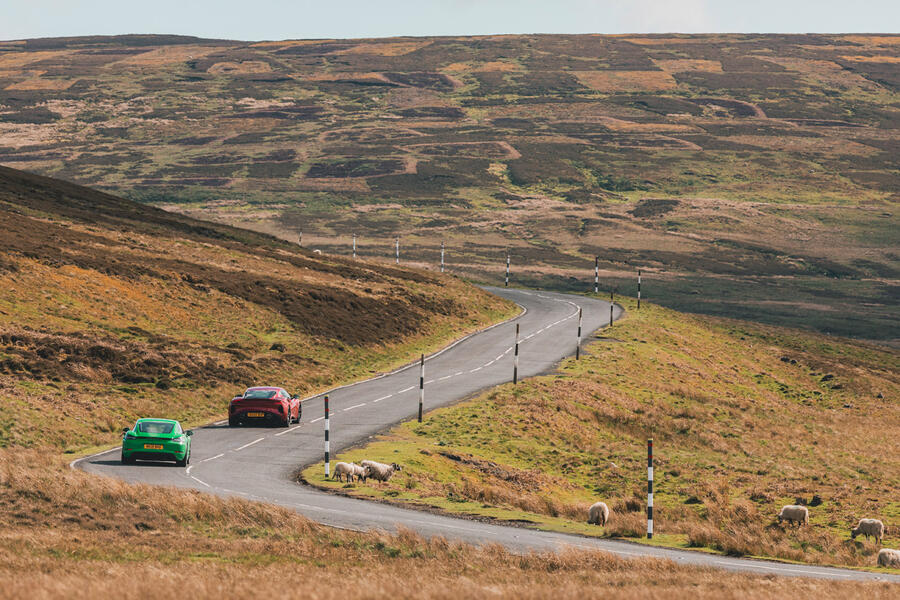
End of story? Not quite. Because if you had put 100 average sportscar buyers in some resort hotel for a weekend a decade ago with a line of Evoras and Caymans outside in the car park to test drive, how many would have ended up preferring the Porsche? Ninety-five? Ninety-eight, even? That’s certainly about the split that the recorded production volumes of these cars would suggest. But now? My guess is that the Emira might get 10 or even 20% of the vote. Small beer on Porsche’s radar, perhaps, but that might still double or even triple Hethel’s annual output and broaden its reach just enough to keep it on its recovery path.
This car is a small but significant step on the road to a new Lotus that might one day be able to challenge the likes of Porsche on more equal terms. And it feels like a first step in the right direction.
The results
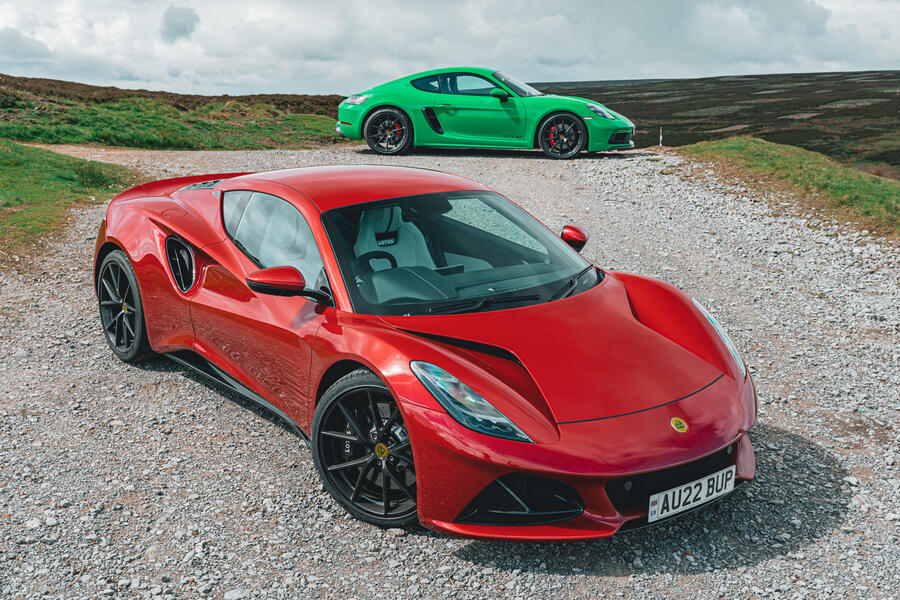
2nd: Lotus Emira V6 First Edition
A huge step up over past Lotuses for its comfort, habitability and daily drivability. Purer and more involving than the Porsche but not as complete.
1st: Porsche 718 Cayman GTS 4.0
A package of compactness, desirability, usability, performance and driver appeal that makes it one of the all-time great mid-engined sports cars.




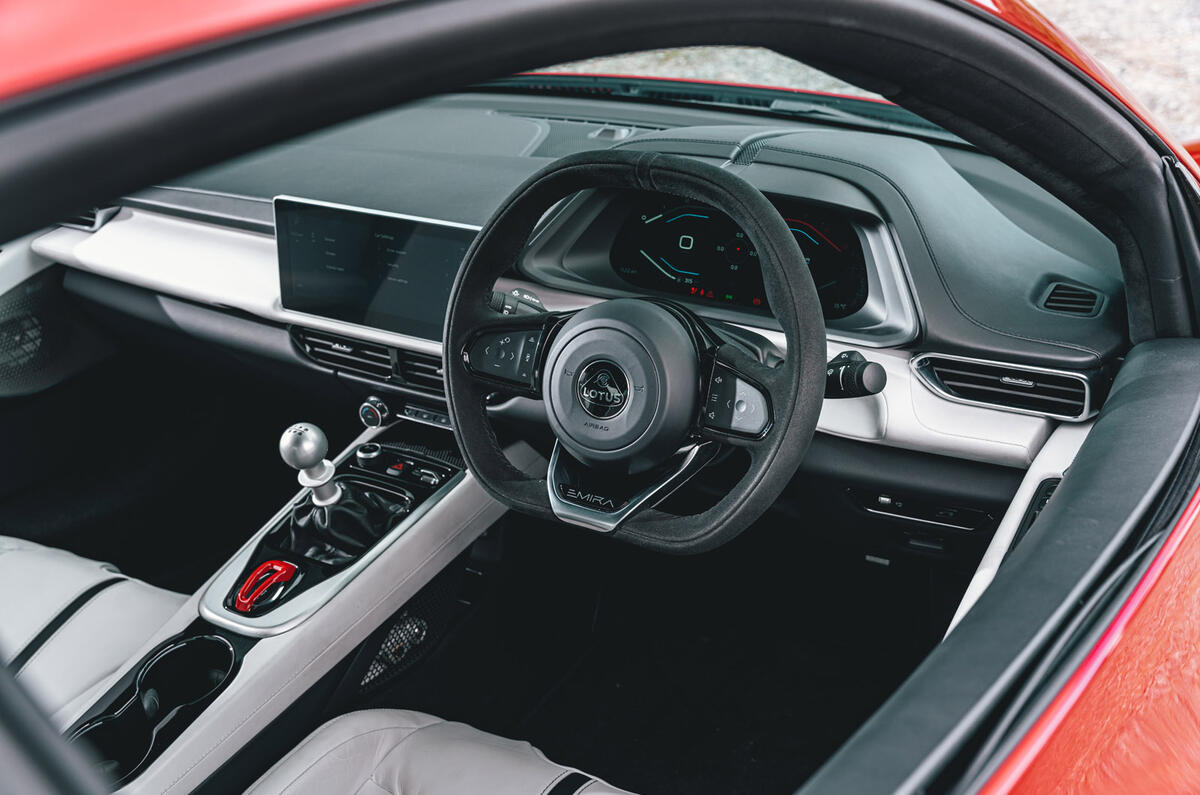
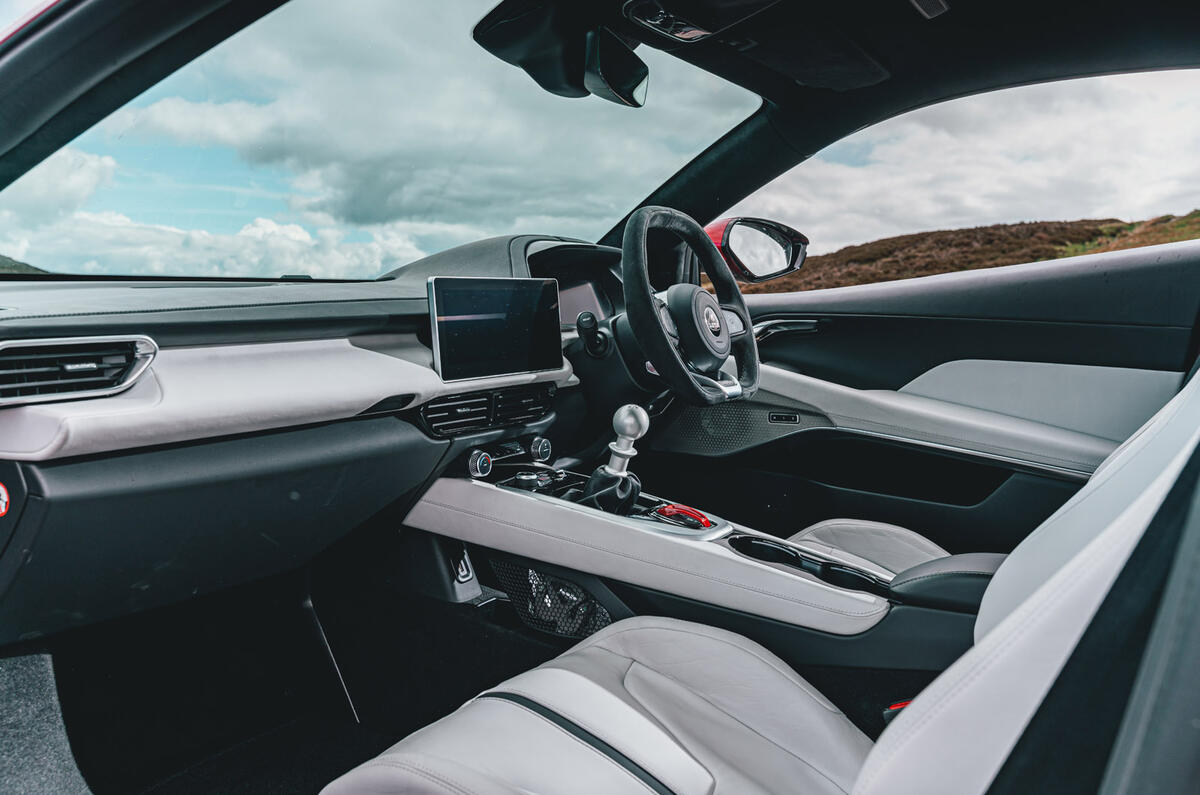
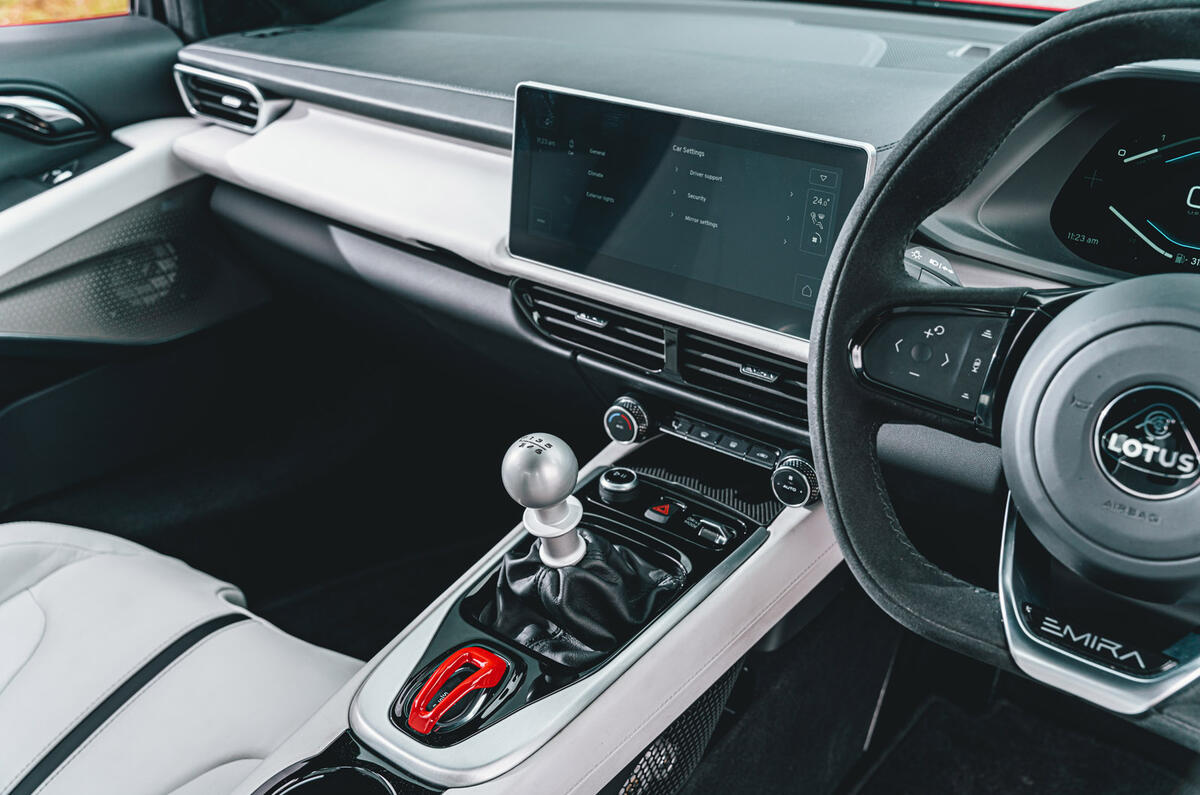

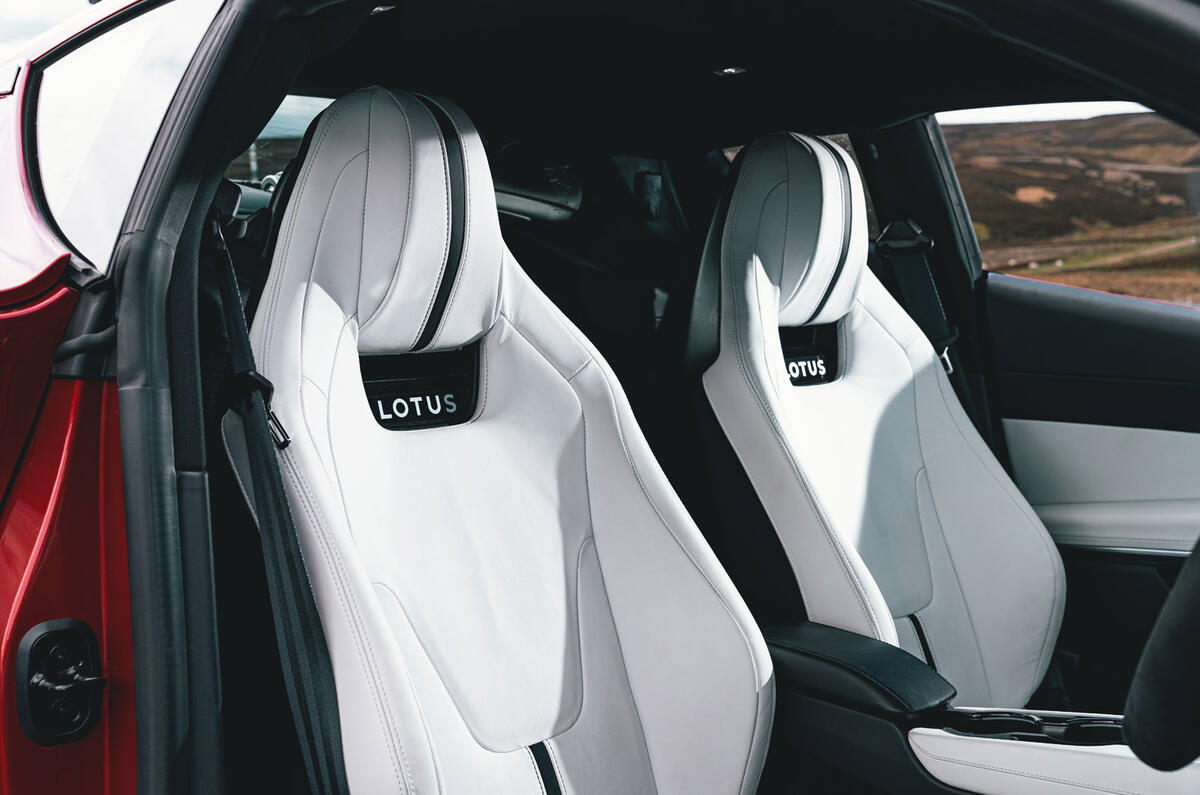
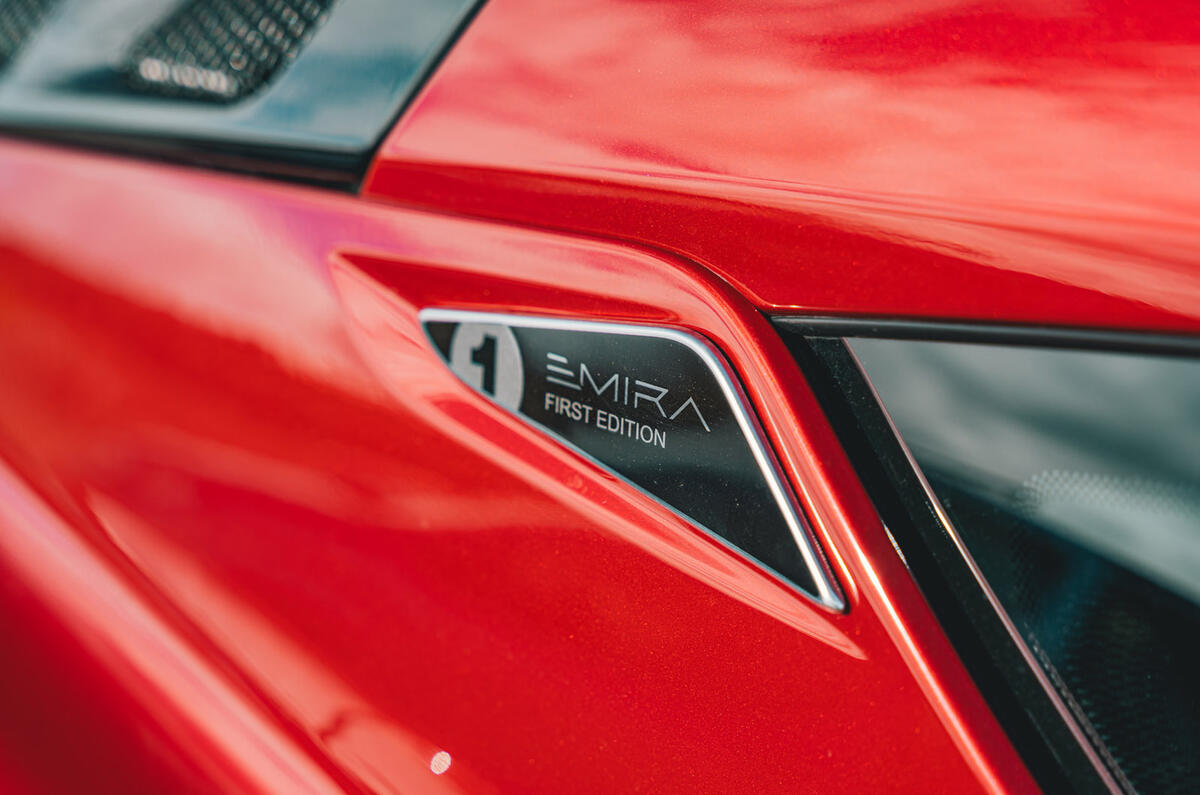
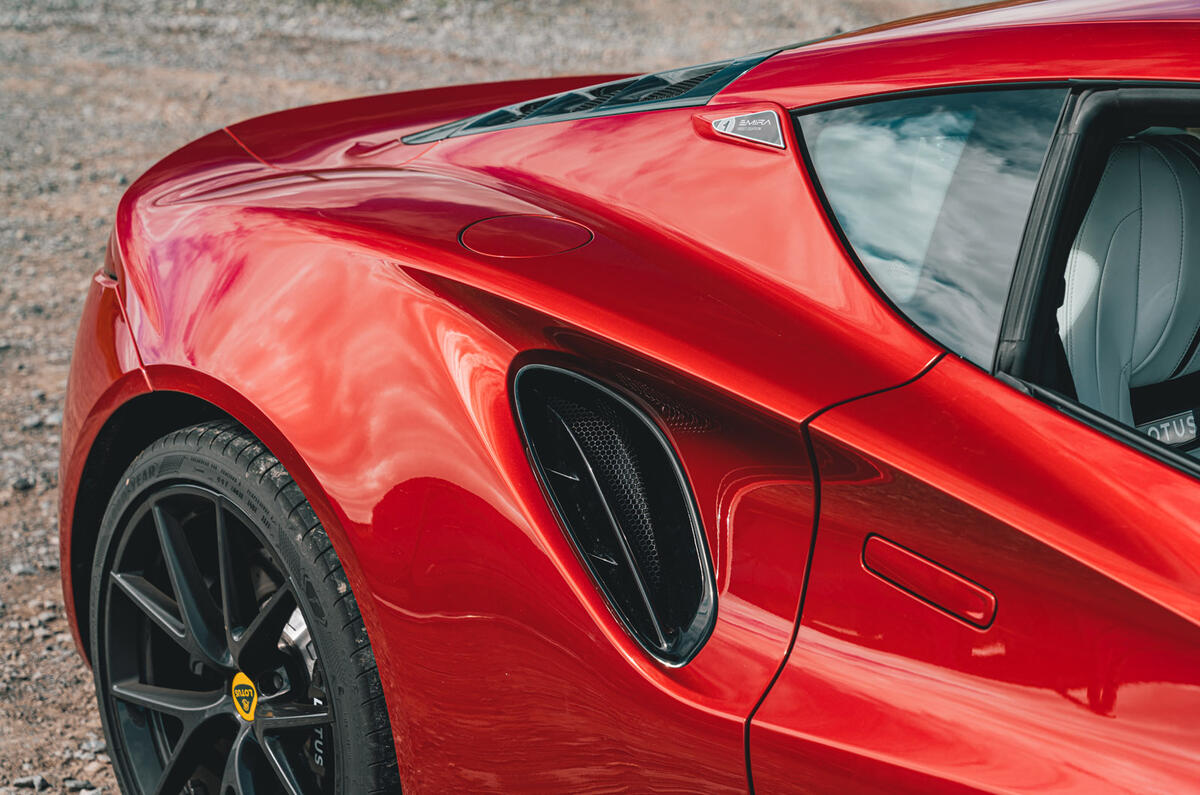
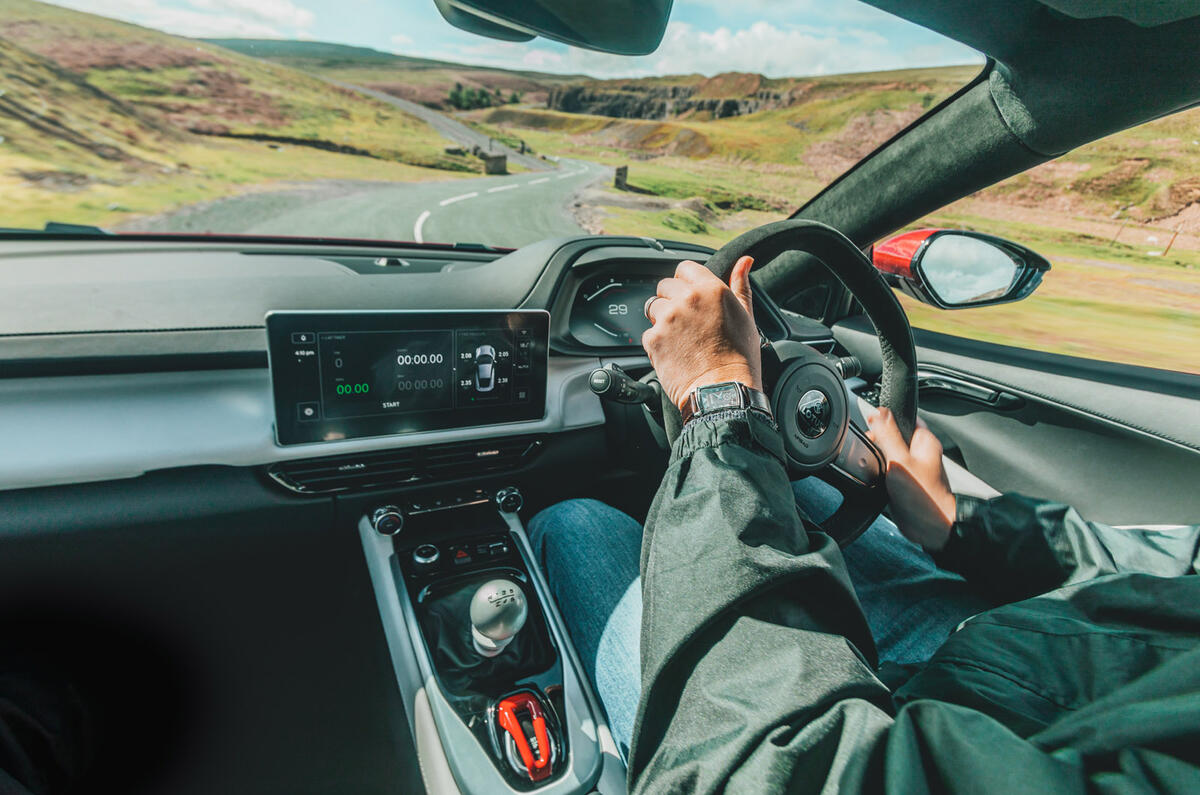

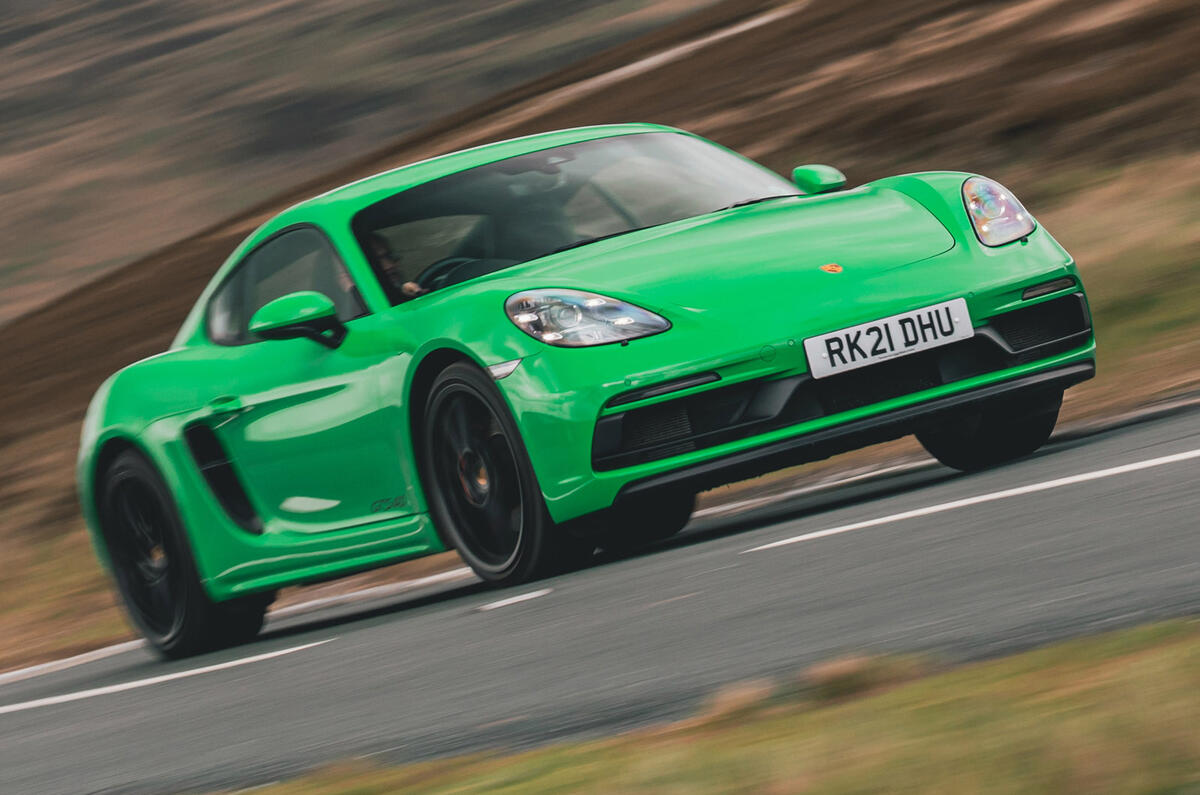
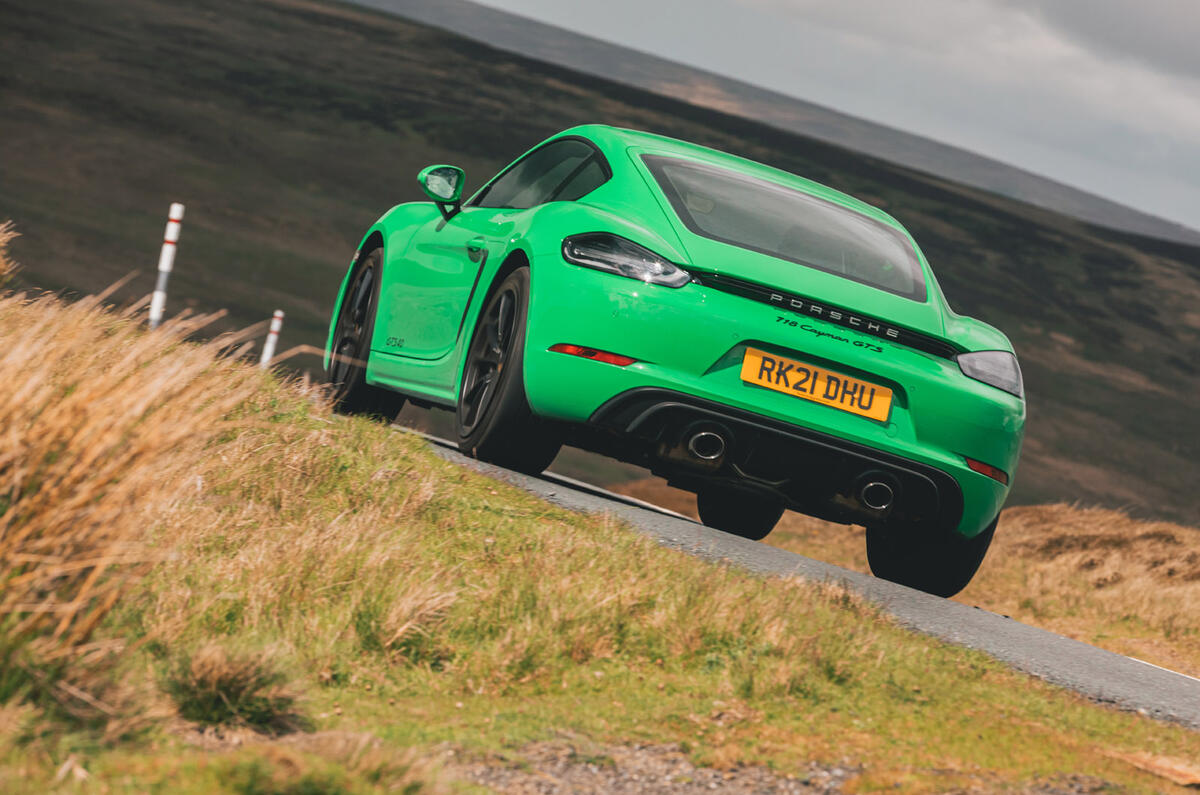
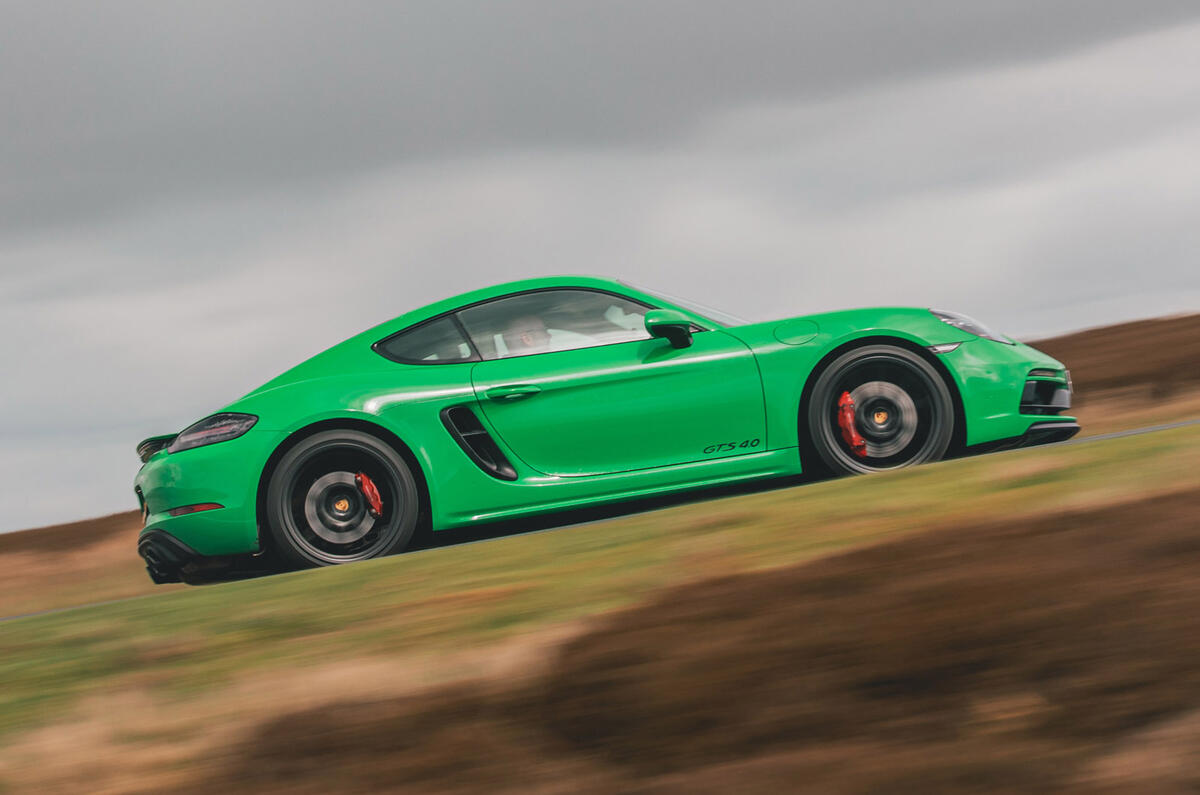
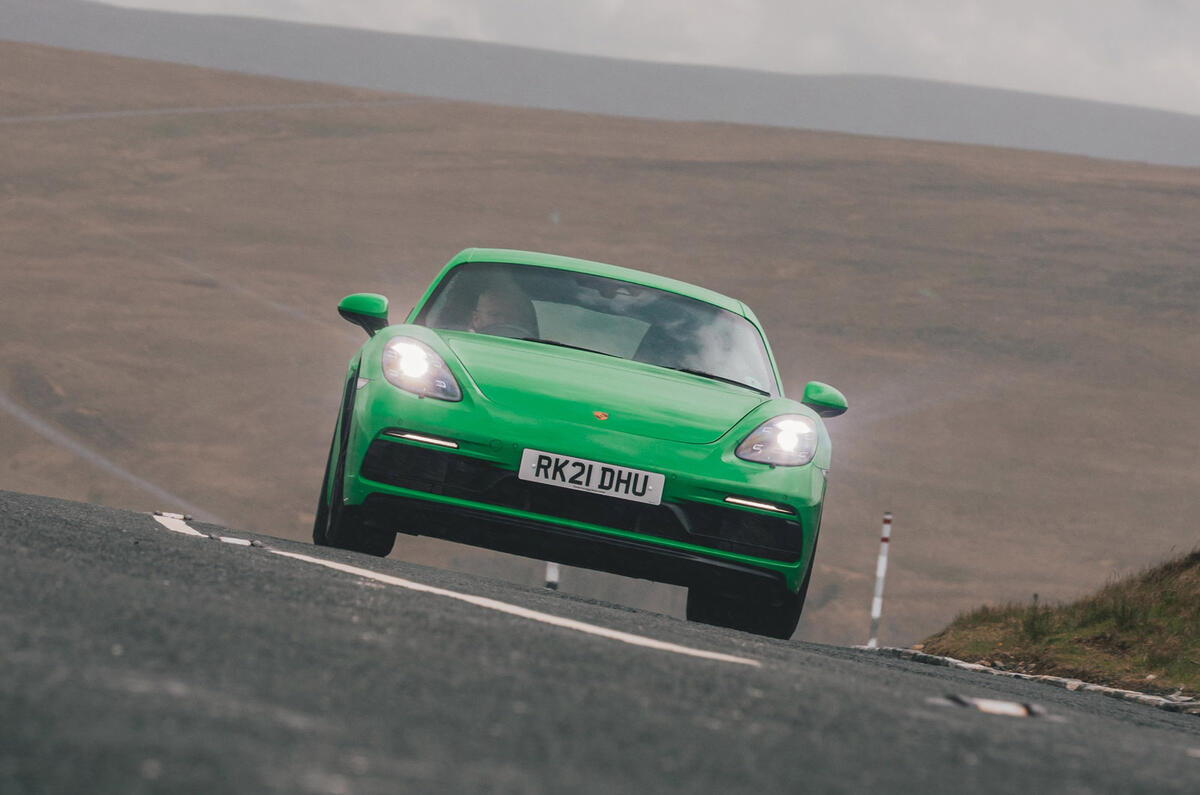
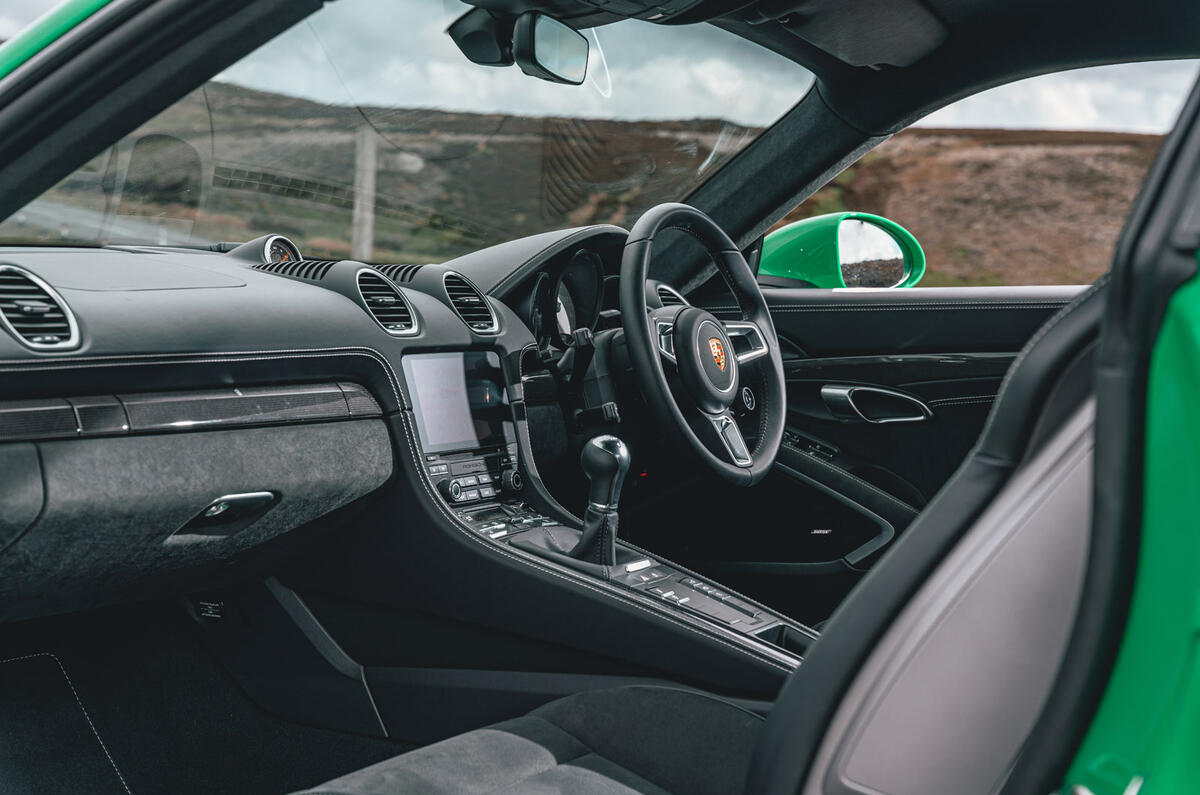
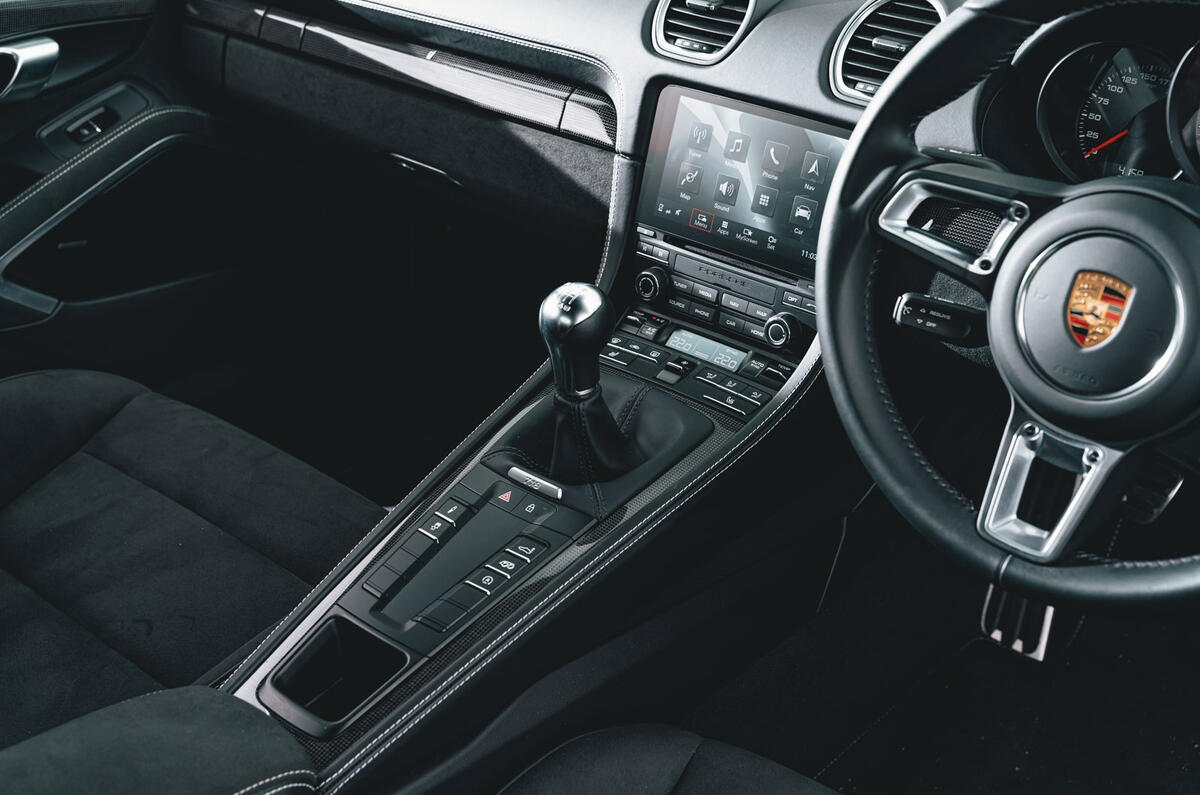
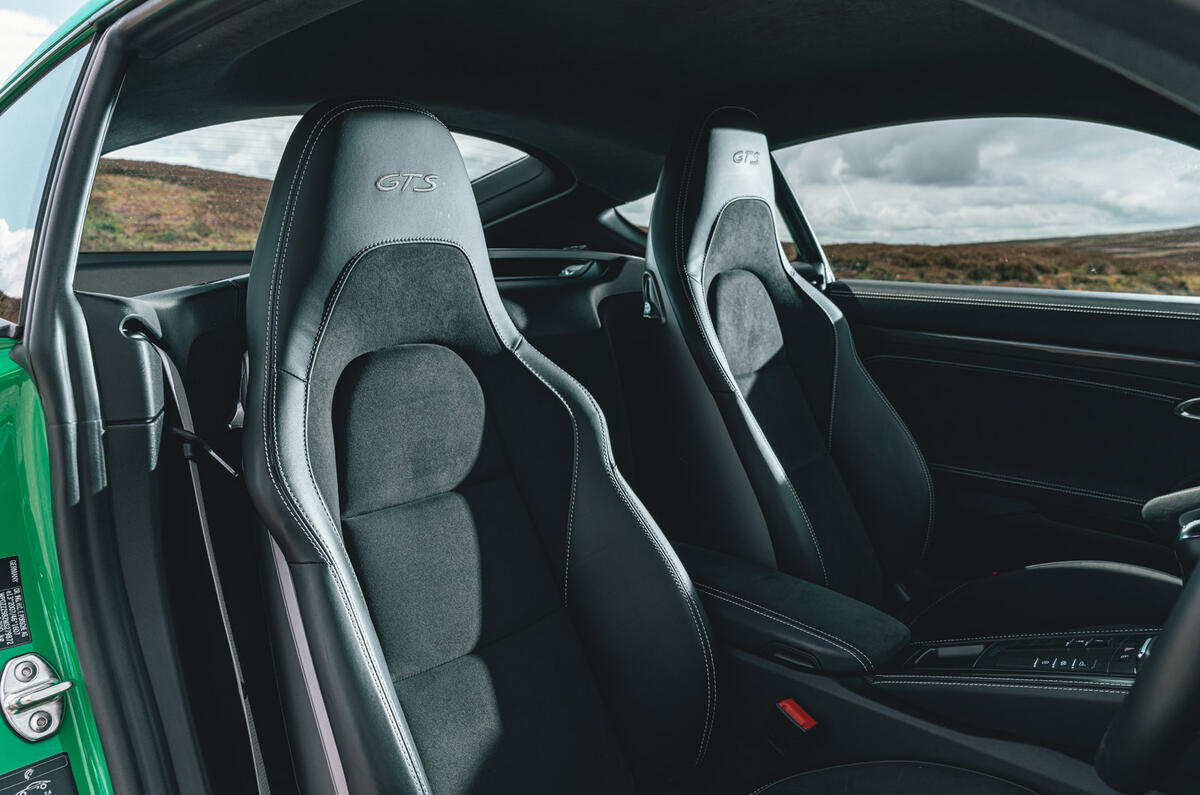
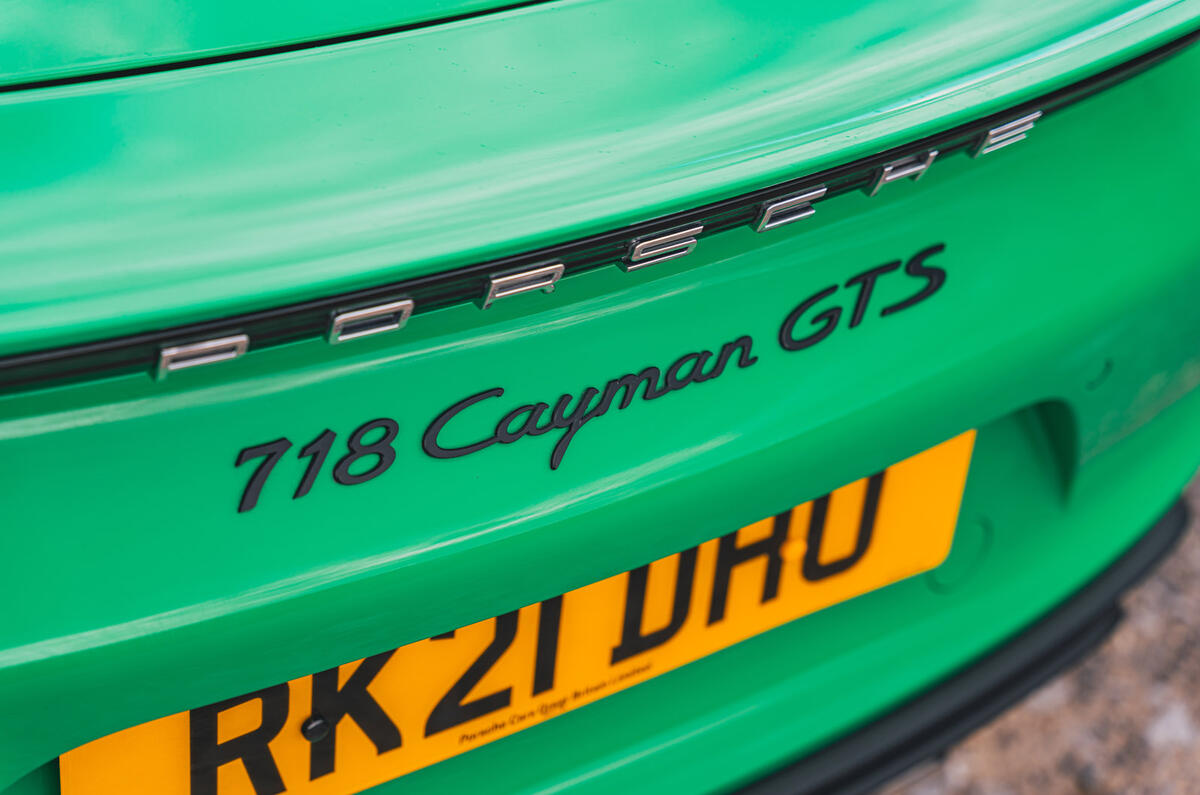
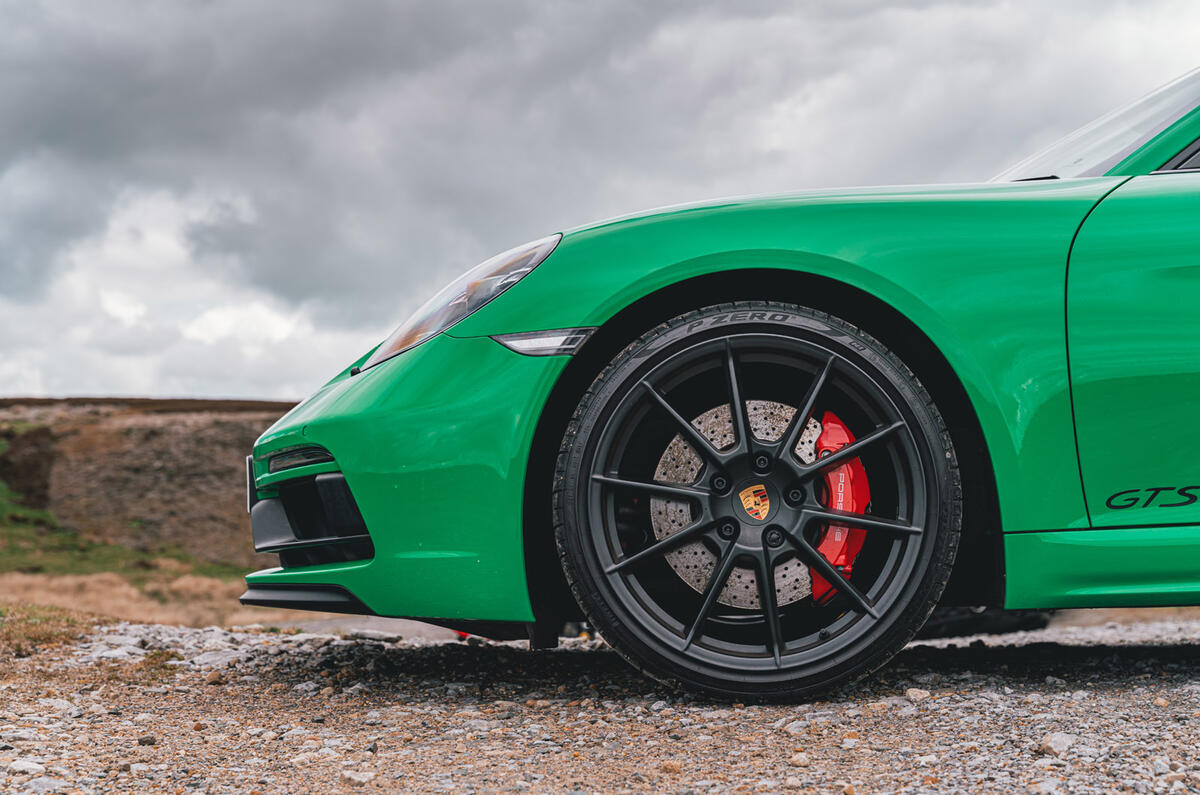
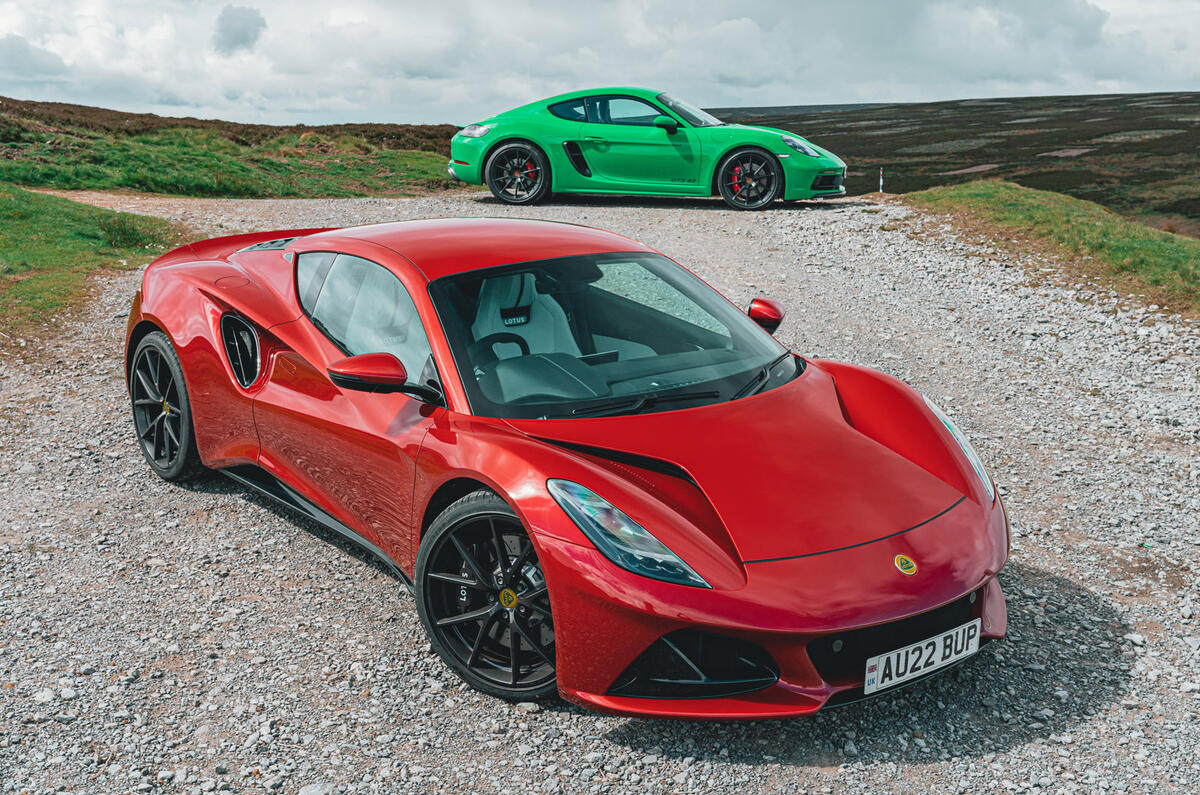

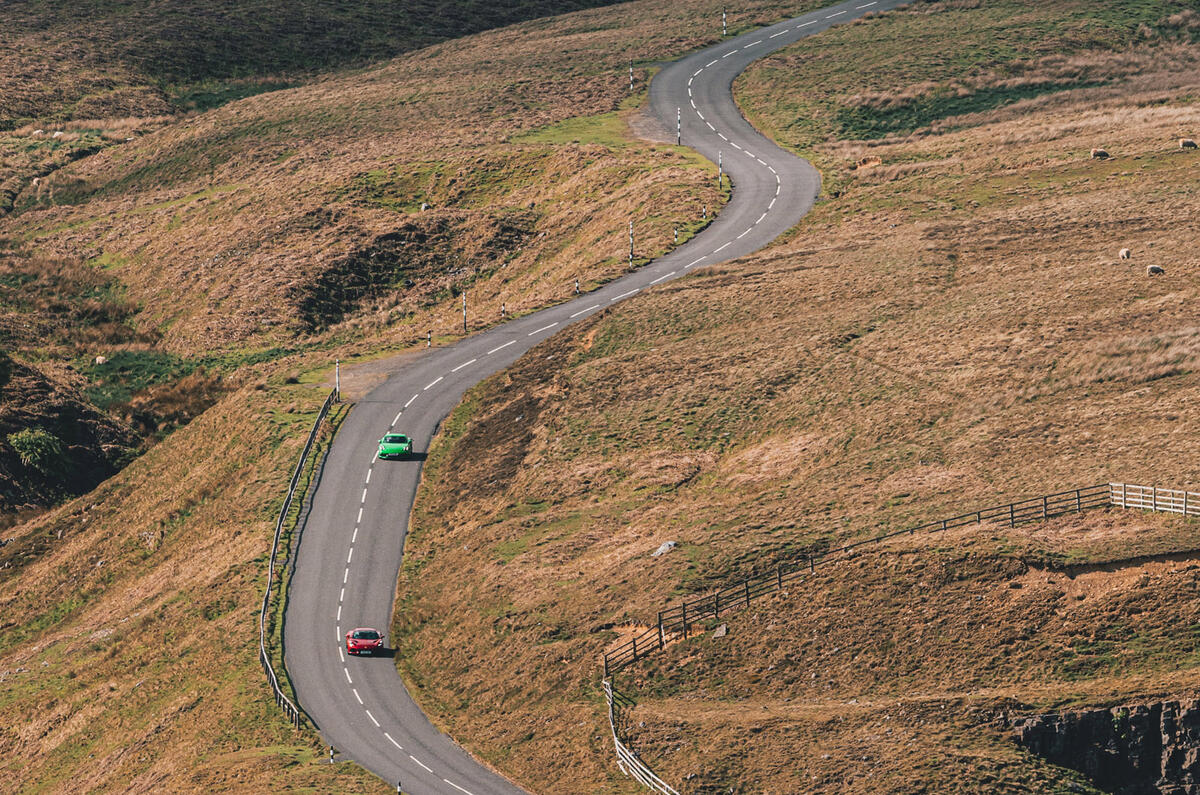
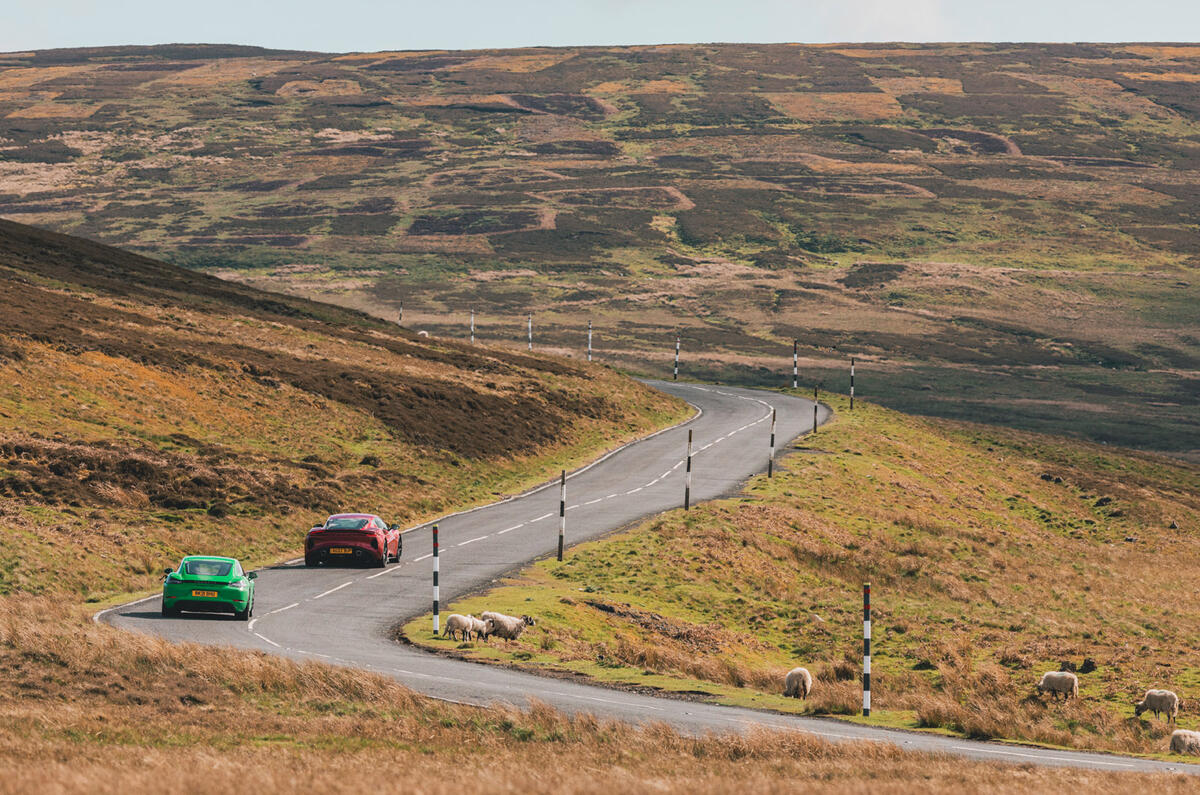



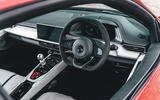
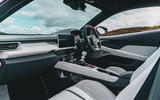
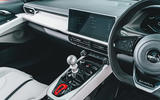
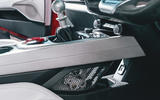









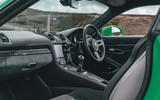
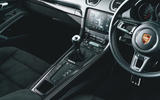
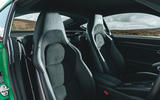
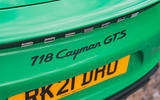











Join the debate
Add your comment
gareth you are probably right, 100% of onlookers would be looking at the Lotus, meanwhile 90% of buyers will be enjoying the Cayman. Theres a very good reason successful people choose a 7yr old platform from Stuttgart over the 'latest and greatest' from Hethel. One day Gareth, if your really lucky you too will know.
Comment spamming Porsche fanboy thinks this is achieving something?
@Bore911 you might be surprised how many of us could afford a Porsche or two. We're just not that dull, champ.